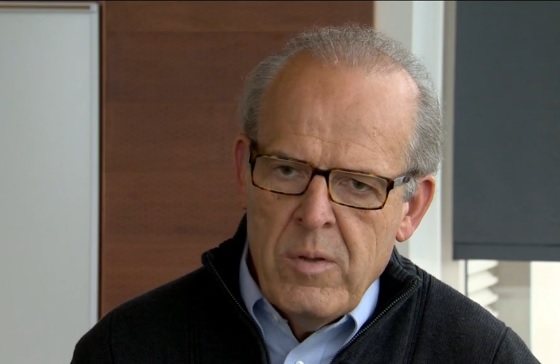BTN.com staff, November 13, 2014

A series that covers the true revolutionaries, Game Changers explores how innovators from Big Ten universities - students, faculty and alums - are inventing or reinventing their chosen fields.
One of the unfortunate - and, unfortunately, well-known - side effects of chemotherapy is the loss of hair. It?s such a daunting prospect that some people, women in particular, will forego treatment just because they don?t want to go bald.
Dr. William Fahl, an oncology professor at the University of Wisconsin, thinks he and his research team may have a solution to that problem. But they didn?t come up with it overnight.
?We had a broad interest in discovering strategies on how to prevent cancer therapy side effects,? Fahl said. ?We were looking to provide supportive care for cancer patients. Within that scope, we invested several years developing animal models that had those side effects, including alopecia, and trying to develop drug modules that could prevent them.?
In chemotherapy treatments, the medicine doesn?t just go to the cancer cells. It spreads through the entire body, which is why it causes hair loss while attacking cancer cells elsewhere.
?[The medicine] is not very intelligent,? Fahl said. ?The concentration of chemotherapy is the same in your big toe as it is in your lung or wherever the cancer cells are.?
[btn-post-package]
Effective cancer treatments work because they prevent the cells from dividing, which is how they grow in the body. However, chemotherapy also prevents healthy cells from dividing, and with enough treatment, normal cells die just like cancerous ones. This non-distinction is why patients lose hair, skin is negatively affected and other cellular activity stops.
For several years, Fahl tested animals with norepinephrine, which was proving effective in terms of hair loss, but there was concern that the drug was running rampant through the subject?s body, and would reduce the effectiveness of the chemotherapy. In effect, while it was protecting the scalp from hair loss, it was also protecting cancer cells from being treated by the chemo drugs.
Fahl said the researchers were sitting around one day when someone brought up the fact that when a patient receives an injection of novocaine at the dentist?s office, the impact of that numbing drug is localized. Your arm, for instance, doesn?t become numb like your mouth.
That?s because novocaine contains a vasoconstrictor - epinephrine - that compresses the blood cells and protects them from outside influences like the pain of dental drills, and also keeps the novocaine from spreading outside a thin layer of blood cells at the point of application.
In the case of baldness due to cancer treatment, ?numbing?? the blood cells near patients? scalps would protect them from the chemicals in chemotherapy, and thus prevent hair loss.
?It should stay at the skin level and protect the skin as well as hair follicles in that setting,? said Fahl, and added that the team was soon conducting experiments to find out if that was indeed the case.
?We found that in our control animals, where they got the vasoconstrictor applied, they were perfectly protected,? he said. ?They had 100 percent retention of their coat.?
In the case of humans wanting to keep the hair on their head during chemotherapy treatments, ?if we can protect that one millimeter depth of skin at the scalp, we would have a valid strategy to provide protection,? he said.
Fahl?s team is discussing (and needs further funding for) figuring out the right application for hair-preservation treatments. Consideration would have to be given to the length of hair on the head as well as its thickness in determining how best to apply the medication. One idea Fahl suggested is using a sort of swim cap on the head, and injecting the medicine into the cap so that it spreads across the scalp.
Both undergraduate and graduate students have been - and will continue to be - crucial for the progress of the program, Fahl said.
?The contribution of students has been substantial,? he said. ?They manage the experiments, they care for the animals, they handle the data that is generated. Some of it involves sitting in meetings of strategic designs with clinicians and doctors about how we are going about this. Some of it is simply being at the animal facility every day to see how the leukemia is growing.
?It is inspiring to watch college students getting involved in something like this."







